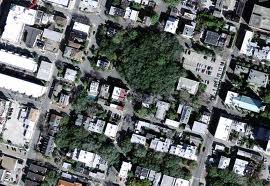 The evidence shows that trees are an important part of our landscape – whether here in forested Ithaca, or in densely populated urban areas.
The evidence shows that trees are an important part of our landscape – whether here in forested Ithaca, or in densely populated urban areas.
Studies have found that trees help improve focus, promote a sense of community, and deter crime. So it’s no surprise that major cities across the nation are launching initiatives to plant trees. New York City is undertaking one such project. Called the MillionTreesNYC initiative, it aims to plant one million trees across all five city boroughs by 2017.
But urban forestry projects typically encounter a problem, explained Gretchen Ferenz, a senior extension associate at Cornell Cooperative Extension in New York City.
“Capital project funds will support planting and immediate care of trees for a couple of years, but costs for longer term care to ensure a young tree’s growth often are not included in municipal budgets,” she told the Cornell Chronicle for a story. “As a result, many urban trees do not survive into maturity.”
Ferenz’s office has joined forces with Cornell’s Department of Natural Resources to create the Urban Forestry Community Engagement Model, a program that provides workshops about the importance of trees to community members in two New York City neighborhoods. The goal is to enlist residents and organizations to become stewards of their community’s trees and, ultimately, to develop resources to help groups around the country do the same.
As part of the program, they’re collecting evidence to learn how to get more community members involved in caring for trees in their neighborhoods. They recently published a study that examines motivations and recruitment strategies for urban forestry volunteers.
Through a survey and focus groups, as well as a review of existing literature on the topic, the team found volunteer who plant and care for trees in their communities are motivated by a wide range of factors. And most have a limited knowledge of the benefits of urban forests.
This type of work is an important first step in helping cities learn how to engage community members to help care for trees in their neighborhoods – and ultimately in making our world a bit greener.
(You can learn more about the Urban Forestry Community Engagement Model by clicking here.)



Speak Your Mind